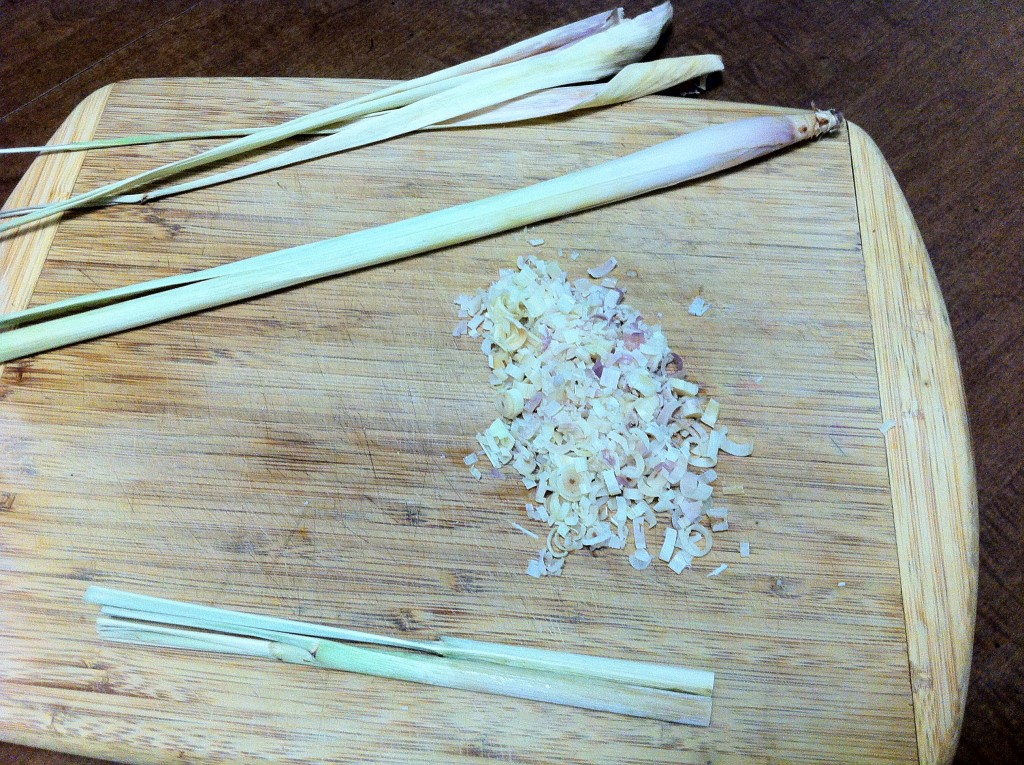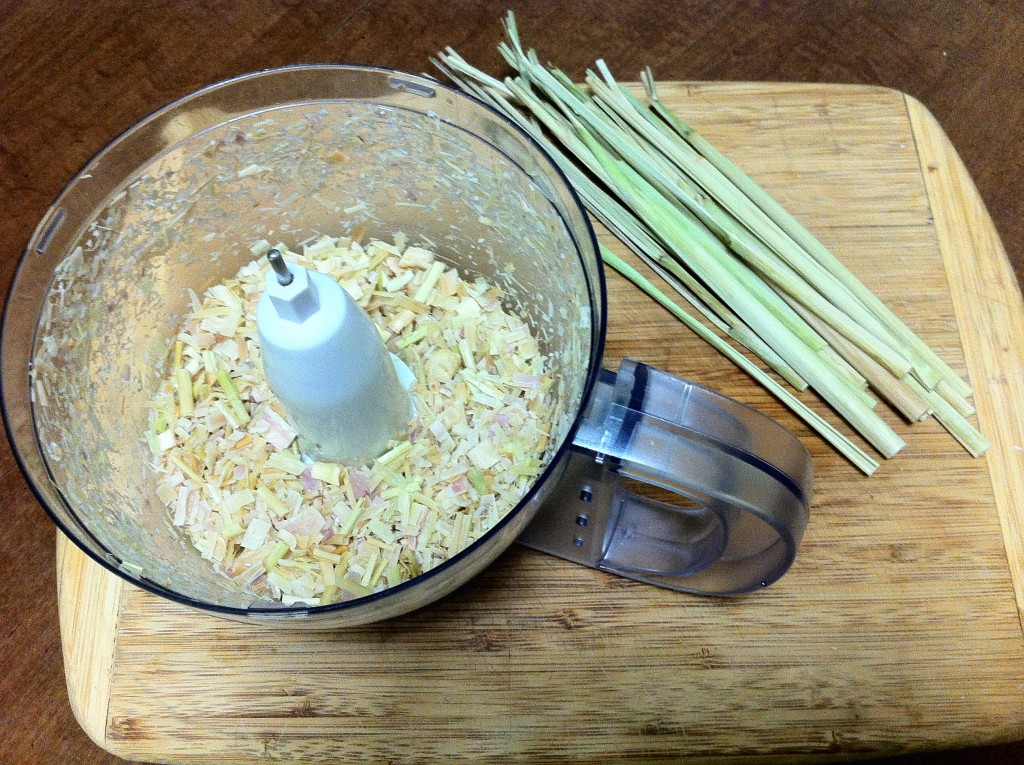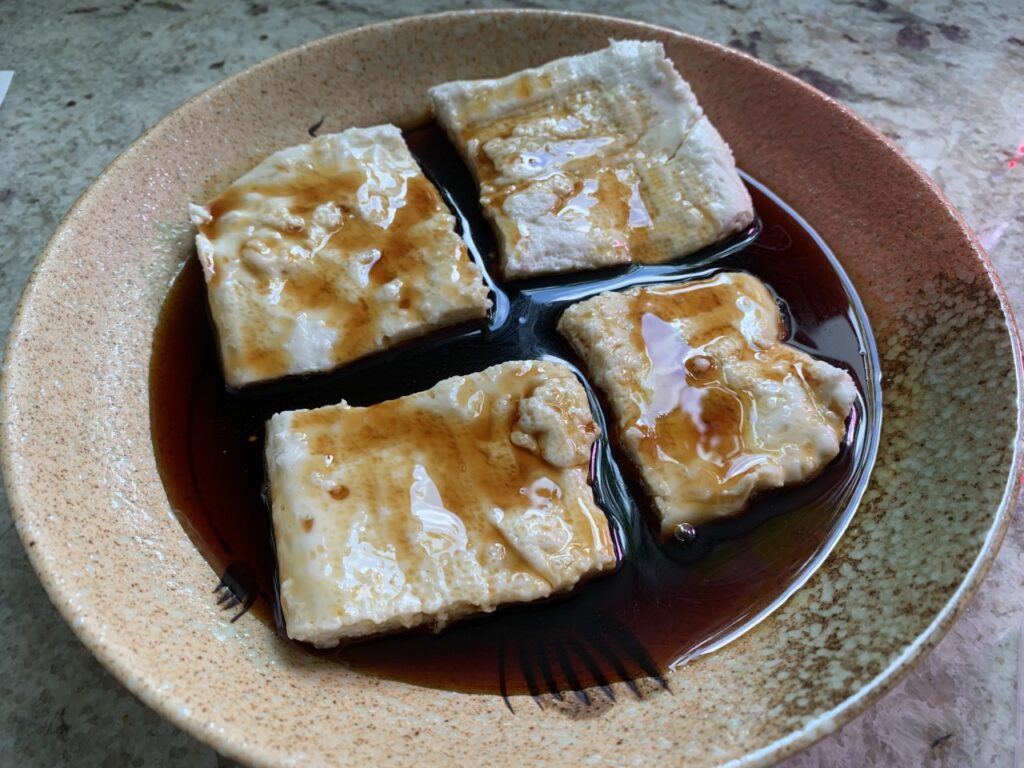
Thai Chicken Satay with Peanut Sauce
Thai chicken satay is one of my absolute favorites! After grilling or broiling these strips of well-marinated chicken, the resulting dish is smoky, moist, and delicious. The peanut sauce only adds another dimension to this complex and satisfying meal.
The key to great Thai chicken satay is marinating the meat for several hours using a sweet, salty, and spicy marinade. (Spicy in the sense of flavorful, not hot.)
The marinade consists of lemongrass, shallots, garlic, red chilies, ginger, turmeric, coriander, cumin, soy and fish sauces, brown sugar, and vegetable oil. This is quite the panoply of ingredients, but trust me, the result is worth it!
Almost all of these ingredients can be found at your regular grocery store, though the lemongrass might require visiting an Asian market. I highly recommend doing so if necessary, however, because lemongrass has a unique flavor profile, preventing easy substitution.
How to prepare lemongrass: Remove the upper third of the stalk (reserve for later use in stocks or soups if desired) and the outer leaves (discard). Cut the rooty bottom off the stalk and discard. Then slice the lemongrass and run it through a food processor until finely chopped.

Top to Bottom: Outer Lemongrass Leaves, Whole Stalk, Chopped Product, Upper Stalks

Chopped Lemongrass in Food Processor, Upper Stalks Reserved for Later Use
I like to start marinating my chicken the night before or the morning of–longer marinade times enhance the flavor. If you’re rushed, marinate it for at least 1-2 hours.
I’ve made this Thai chicken satay many times, and either grilling or broiling works just fine. I personally prefer grilling, which creates char marks and imparts a nice smoky flavor. On the other hand, broiling is usually faster and cleaner, and broiled chicken satay still tastes great.

Grilled Thai Chicken Satay with Homemade Peanut Sauce
Peanut sauce is an essential component of Thai chicken satay. Sometimes I make a fast-and-easy peanut sauce using peanut butter, but lately I’ve preferred an authentic Thai peanut sauce made from roasted peanuts. The latter is still relatively easy to prepare but utilizes more traditional Thai flavors, like fish sauce and coconut milk. Overall, it has a more complex flavor and a courser texture.

Thai Chicken Satay with Roasted Peanut Sauce
Thai chicken satay is great for a party. You can make it ahead of time and keep it in a warm oven until ready to serve. It’s a great finger food that guests will love–I’ve almost never had any leftovers. Serve it with Singha beer or Thai Iced Tea and enjoy!
If you enjoyed reading this post, like my Facebook page and subscribe to my blog to follow my cooking adventures and flavorful journeys!







